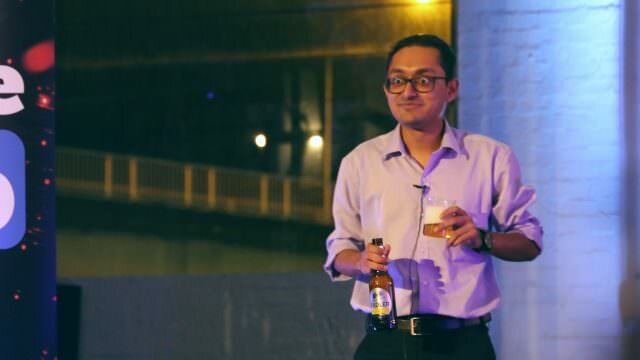Last updated January 17, 2018 at 12:59 pm
Scientists have ingeniously combined Boolean logic and pharmacology to create a brand new way of delivering drugs to the site that they’re needed, without affecting any other parts of the body.
Using a common gel containing a high amount of water, called a hydrogel, they encased drugs that could only be released in certain physiological conditions, such as those found in a particular organ or at a disease site. That release mechanism was inspired by Boolean logic.
Credit: Cole DeForest/University of Washington
Drug treatments can save lives, but sometimes they also carry unintended effects. For example, the same therapeutics that target pathogens and tumours can also harm healthy cells. Therefore, developing a packaging system that only releases those drugs only when they’re needed, or where they’re needed, has long been a goal of researchers.
Encasing the drug in hydrogel, the scientists from the University of Washington developed a way to trigger the dissolving of the hydrogel and exposing of the drug in response to specific cues. These could be the presence of an enzyme or even the acidic conditions that could be found in area surrounding a tumour.
These triggers can also be tailored to the situation, allowing researchers to create many different packages that open up in response to unique combinations of environmental cues.
The key control of this process was inspired by Boolean logic, a mathematical thinking used in computer coding, centred around simple the binary commands: “YES,” “AND” or “OR.” The concept was simple – chemical structures which would break down in the presence of a specific stimuli (YES), one or the other of two stimuli (OR), or the presence of both of two stimuli (AND). When these structures were broken, the stability of the hydrogel was lost and it could dissolve away.
A “YES” gate, opened by a specific stimuli. Credit: Cole DeForest/University of Washington
“Our ‘gates’ consist of chemical chains that could — for example — be cleaved only by an enzyme that is uniquely produced in certain tissues of the body; or be opened only in response to a particular temperature or specific acidic conditions,” said lead researcher Cole DeForest. “With this specificity, we realized we could more generally design hydrogels with gates that would open if only certain chemical conditions — or logic statements — were met.”
The hydrogels synthesised by the team contained chemical links which held the gel together, but were broken under very specific conditions – much like how a locked gate in a fence will only open with a specific set of keys.
One of the “YES” gates they designed is a short peptide molecule that can be cleaved by an enzyme known as matrix metalloprotease (MMP). If MMP is absent, the gate and hydrogel remain intact. But if the enzyme is present in a cell or tissue, then MMP will slice the peptide gate and the hydrogel will burst open, releasing its contents.
Another “YES” gate that the researchers designed consists of a chemical group called an ortho-nitrobenzyl ester (oNB). This chemical gate is immune to MMP, but it can be broken down by light. A third “YES” gate contained a disulfide bond, which breaks upon reaction with a specific chemical type, but not light or MMP. A hydrogel containing one of these types of “YES” gates is essentially “programmed” to respond to its physiological surroundings using the Boolean logic of its gate.
By using combinations of individual gates, the researchers could then programme the hydrogel to dissolve in response to different mixes of stimuli. For example, by combining two “YES” gates, they could create an “AND” gate, which required both stimuli in order to open. They could also combine multiple “YES” gates to create an “OR” gate, where only one of many stimuli was required to open the gate.
An “AND” gate requiring two stimuli to open (left) and an “OR” gate requiring one of two stimuli (right). Credit: Cole DeForest/University of Washington
To prove the effectiveness of the hydrogel capsule, the researchers used it to carry doxorubicin, a chemotherapy drug which quickly kills cancer cells. To the hydrogel they combined two “YES” gates to create an “AND”, and then added it to a sample of cancer model cells in a lab. The hydrogel capsule stayed intact and the cells remained alive, unaffected by the enclosed chemotherapy drugs right up until the correct combination of stimuli were applied. With the gates unlocked, the doxorubicin was freed and the cancer cells were rapidly killed.
“Our hope is that, by applying Boolean principles to hydrogel design, we can create a class of truly smart therapeutic delivery systems and tissue engineering tools with ever-greater specificity for organs, tissues or even disease states such as tumour environments,” said DeForest. “Using these design principles, the only limits could be our imagination.”
The research has been published in Nature Chemistry
Follow us on Facebook, Twitter and Instagram to get all the latest science.






























































































































































































































































